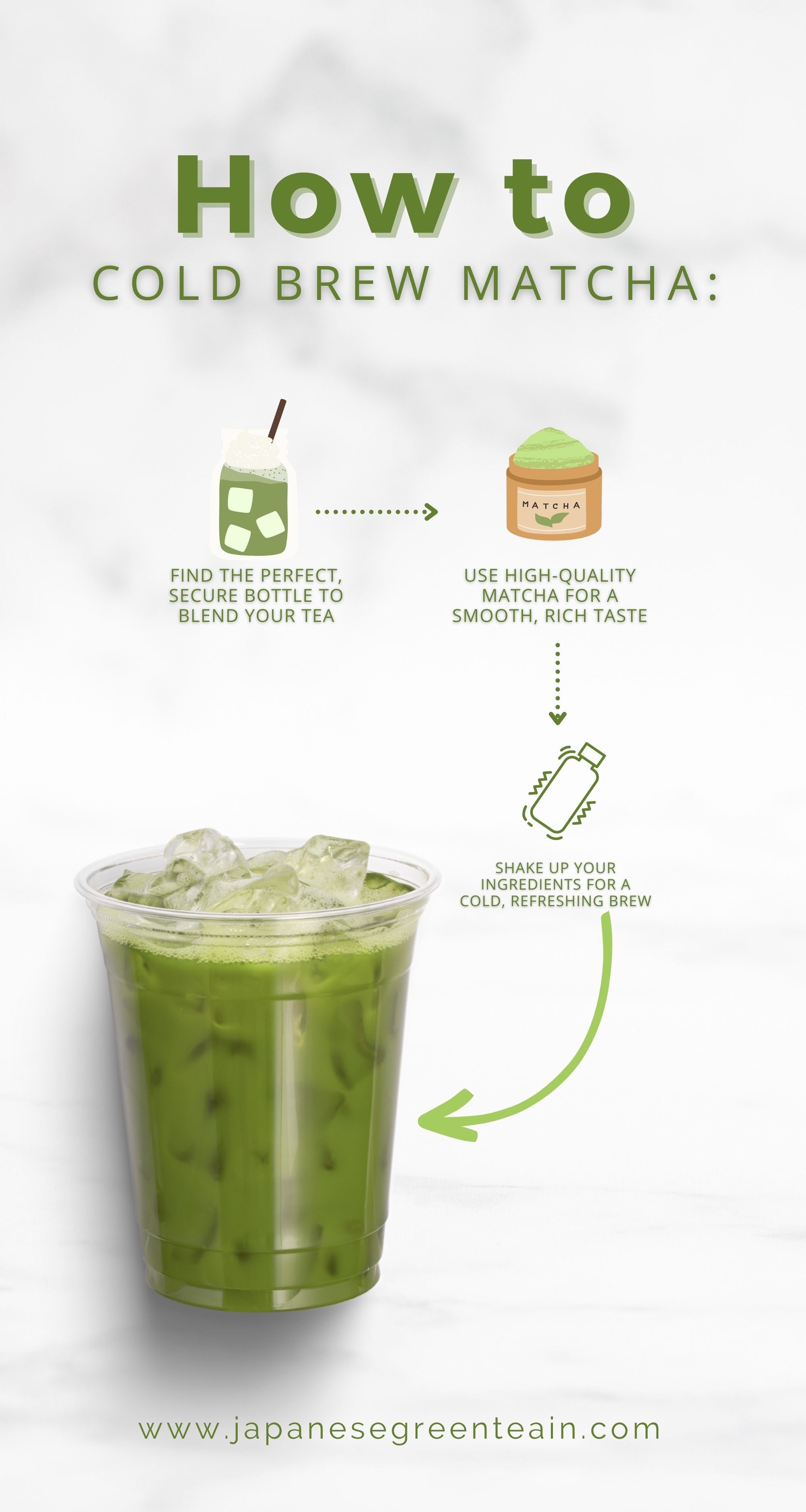Matcha tea makes a deliciously creamy hot beverage. But did you know that it tastes just as good as an iced drink? Sure, you could make a simple glass of iced matcha by cooling down a cup of hot matcha with a few ice cubes. But cold brew matcha creates an even richer, smoother, more flavorful experience.
Plus, if you're new to matcha and still getting used to its rich, earthy flavor, preparing it in cold water can minimize some of the bitter taste sometimes found when the tea is prepared in hot water.
Even better? Matcha made in cold water still contains all the caffeine and the relaxing benefits of l-theanine!
Note:
- This article is for cold brewing matcha powdered green tea. If you want to cold-brew sencha loose-leaf Japanese green tea, learn how in this post.
- Not sure of the difference between sencha vs matcha? Click here to find out.
Like cold brew coffee, cold brew matcha is prepared in cold water instead of hot, instead of simply cooling down a hot brewed beverage with ice cubes. This also means that you get the full flavor since the tea isn't watered down with dissolved ice cubes. And unlike cold brew coffee, which requires a more complicated set-up to prepare, your cold, refreshing glass of cold brew matcha can be ready in moments and requires only one tool!
With that level of simplicity, it's the perfect way to wake up on a hot summer morning, refresh after a long workout at the gym, or cool off on a humid afternoon.
So what are we waiting for? Let's get started!
But before that, you can watch this comprehensive guide on how to cold brew a matcha.
If you like this video, please subscribe to our YouTube Channel so that you don't miss future videos from us.
Video Length: - 8 minutes 31 seconds
Click to Subscribe to my YouTube Channel
- Find the Perfect, Secure Bottle to Blend Your Tea
- Use High-Quality Matcha for a Smooth, Rich Taste
- Different Liquids Offer Different Flavors and Benefits
- Shake Up Your Ingredients for a Cold, Refreshing Brew
- Delicious Cold Brew Matcha Recipes You Need to Try
- Tips for the Perfect Cold Brew Matcha
- Benefits of Cold Brew Matcha
- Cold Brew Matcha is the Perfect Addition to a Busy Lifestyle
- Why Does Cold Brew Tea Taste Sweet?
- How to Cold Brew Matcha Infographic
- Buy Matcha for Cold Brewing
FIND THE PERFECT, SECURE BOTTLE TO BLEND YOUR TEA
Before preparing your glass of cold matcha, you'll first need to find a bottle or jar with a secure lid.
A water bottle works well, or you can be thrifty and use a recycled Mason jar or peanut butter jar.
You could also try a bottle with a built-in blender, such as this classic Blender Bottle that uses a wire ball to help break up particles, or this matcha flask specially designed for making cold brew matcha tea.
The blender ball isn't strictly necessary to make a good glass of matcha, but it can help create a smoother blend and even create a slushy texture if you add crushed ice. For an even thicker consistency, you can choose to skip the bottle entirely and just mix up your tea powder, liquid, and ice in a blender.
Above Image: Blender Bottle
Above Image: Matcha Flask
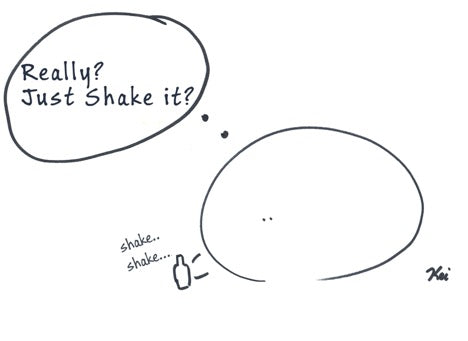 USE HIGH-QUALITY MATCHA FOR A SMOOTH, RICH TASTE
USE HIGH-QUALITY MATCHA FOR A SMOOTH, RICH TASTE
Next, you'll want to select your powdered matcha.
Not all matcha is created equal. It's usually best to use something high-quality to achieve the best taste and avoid using lots of sweeteners to balance the flavor. However, since brewing with cold water minimizes some of the bitterness naturally found in matcha, you can get away with using slightly lower grade tea than you might use for a hot cup of matcha.
The best taste comes from matcha purchased from a reputable source and was shade-grown in Japan. As long as the company sells quality matcha, ceremonial or culinary grade tea works equally well.
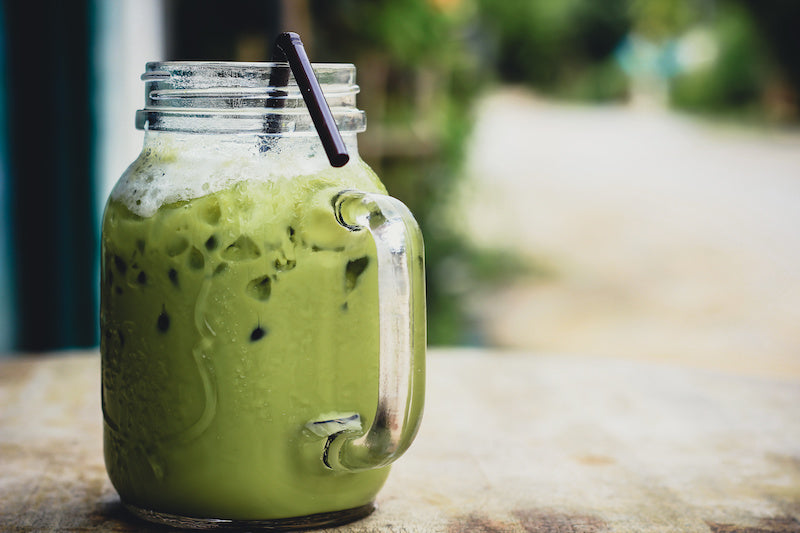
DIFFERENT LIQUIDS OFFER DIFFERENT FLAVORS AND BENEFITS
Now, you can select a liquid to blend with your matcha powder.
Cold water is the traditional option and an excellent choice that will give you the full, unaltered matcha flavour. But if you're still adjusting to the matcha flavor or you'd just like to get creative, you have lots of other options!
Milk adds a rich texture and flavor, and you can adjust the taste of the final beverage by using dairy, almond, coconut, oat, or any other type of milk. Coconut water is another possibility that will give your drink additional health benefits such as electrolytes and potassium, not to mention a fresh coconut flavor.
SHAKE UP YOUR INGREDIENTS FOR A COLD, REFRESHING BREW
It's finally time to prepare your glass of cold brew matcha! To the bottle of your choosing, add:
- 1 teaspoon (2g or about ½ teaspoon) of matcha powder
- 1 1/2 cups (12 oz) of cold water, milk, or coconut powder
- Ice (optional)
Feel free to adjust the proportions to suit your taste. Just make sure there's about an inch of space at the top of the bottle, so the contents have room to move around and blend together, and be sure to screw the lid tightly closed. You don't want to start the day with an icy-cold matcha shower! Briskly shake the bottle until everything in it is smooth, uniformly green, and a layer of white foam forms at the top.
Let the bottle sit for a few moments, and then swirl the liquid to help all of the foam rise to the surface. You can drink the matcha directly from the bottle, or you can pour it into smaller mugs or glasses. Since the tea powder doesn't dissolve and is instead suspended in the liquid, the particles might start falling to the bottom before you finish your drink. If this happens, just shake the bottle again.
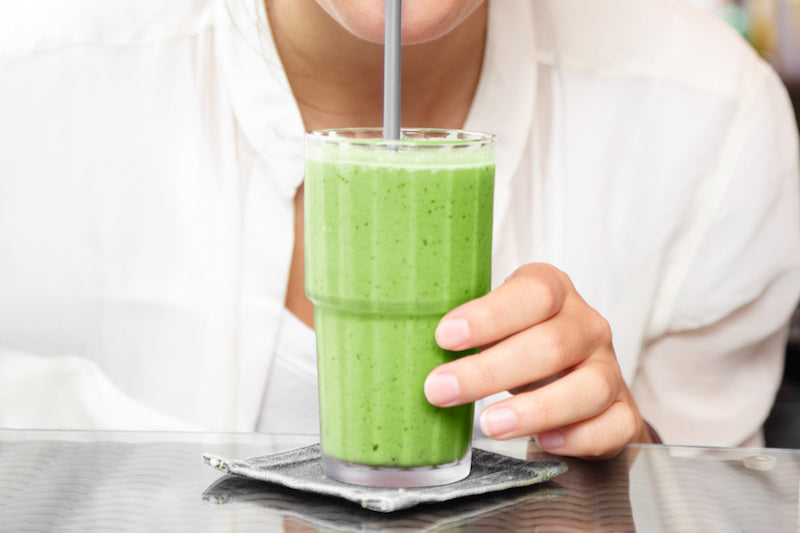
6 DELICIOUS COLD BREW MATCHA RECIPES YOU NEED TO TRY
Cold brew matcha is a refreshing and versatile drink that can be enjoyed in many ways. Whether you're looking for a twist on the classic or something a little more creative, here are some delicious recipe variations that you can easily try at home.
1. Classic Cold Brew Matcha
Ingredients:
- 1 tsp matcha powder
- 8 oz cold filtered water
- Ice cubes
Instructions:
- Sift the matcha powder into a bowl or bottle to remove any clumps.
- Add cold filtered water.
- Stir well or shake vigorously in a bottle until the matcha is fully dissolved and smooth.
- Pour into a glass filled with ice cubes and enjoy!
2. Cold Brew Matcha with Coconut Water
For a tropical twist, you can replace regular water with coconut water. This adds a natural sweetness and an extra layer of flavor to your drink.
Ingredients:
- 1 tsp matcha powder
- 8 oz cold coconut water
- Ice cubes
Instructions:
- Sift the matcha powder into a bowl or bottle.
- Add the cold coconut water instead of regular water.
- Shake or stir until the matcha dissolves completely.
- Serve over ice and enjoy this hydrating, subtly sweet treat.
3. Cold Brew Matcha Lemonade
Matcha and lemon pair beautifully for a tart and refreshing take on the traditional cold brew matcha.
Ingredients:
- 1 tsp matcha powder
- 6 oz cold water
- 2 oz fresh lemon juice
- 1-2 tsp honey or maple syrup (optional)
- Ice cubes
Instructions:
- Sift the matcha powder into a bottle.
- Add the cold water and lemon juice.
- If you prefer a sweeter drink, stir in honey or maple syrup.
- Shake or stir until well-mixed, and pour over ice for a bright, energizing drink.
4. Creamy Cold Brew Matcha (with Almond or Oat Milk)
If you’re craving a creamy, rich version of cold brew matcha, adding almond milk, oat milk, or any plant-based milk creates a latte-like experience.
Ingredients:
- 1 tsp matcha powder
- 6 oz cold almond or oat milk
- 2 oz cold water
- Ice cubes
Instructions:
- Sift the matcha powder into your bottle or shaker.
- Add the cold water first to help the matcha dissolve evenly.
- Once dissolved, pour in the cold almond or oat milk.
- Shake or stir until smooth, then serve over ice for a delicious, creamy matcha drink.
5. Sparkling Cold Brew Matcha
For a fun and fizzy variation, try making cold brew matcha with sparkling water. This light and bubbly version is perfect for hot days or when you want something a little different.
Ingredients:
- 1 tsp matcha powder
- 6 oz cold water
- 4 oz sparkling water (flavored or plain)
- Ice cubes
Instructions:
- Sift the matcha powder into your bottle.
- Add the cold still water first and shake until the matcha is dissolved.
- Gently pour in the sparkling water to avoid losing the bubbles.
- Serve over ice for a refreshing, effervescent twist on cold brew matcha.
6. Cold Brew Matcha with Vanilla and Honey
This variation offers a mildly sweet, fragrant, and slightly creamy taste. The combination of vanilla and honey brings out matcha’s smoothness, making it a delightful treat.
Ingredients:
- 1 tsp matcha powder
- 6 oz cold water
- 2 oz cold almond or regular milk
- 1 tsp vanilla extract
- 1-2 tsp honey (or sweetener of your choice)
- Ice cubes
Instructions:
- Sift the matcha powder into a bottle or shaker.
- Add cold water and shake until smooth.
- Stir in the vanilla extract and honey, ensuring they are well-mixed.
- Add the cold almond or regular milk, shake gently, and pour over ice for a subtly sweet, creamy drink.
TIPS FOR THE PERFECT COLD BREW MATCHA:
- Always sift the matcha powder before adding liquid to avoid clumps.
- Use cold filtered water for the best taste.
- Adjust sweetness and milk types according to your preference.
- For a frothier drink, use a shaker bottle or matcha whisk.
With these easy variations, you can enjoy cold brew matcha in different ways every day! Whether you like it light and refreshing or creamy and rich, these recipes offer something for everyone.
BENEFITS OF COLD BREW MATCHA
Cold brew matcha is not only a refreshing drink, but it also offers a range of health benefits, making it an excellent addition to your daily routine. By using cold water instead of hot, you can enjoy the same great benefits of matcha with a few added perks. Here are the key benefits of cold brew matcha:
Higher Antioxidant Levels
Matcha is packed with antioxidants, particularly catechins like EGCG (epigallocatechin gallate), which are known for their anti-inflammatory and disease-fighting properties. Cold brewing matcha helps to preserve these delicate antioxidants since the powder is not exposed to heat, ensuring you get the maximum health benefits in every sip.
Sustained Energy Boost
Like traditional hot matcha, cold brew matcha provides a natural energy boost due to its caffeine content. However, unlike coffee, matcha releases caffeine slowly, thanks to the amino acid L-theanine. This results in a more sustained, calm energy throughout the day, without the jitters or crash associated with coffee. Cold brewing makes this effect even more gradual, offering a smooth and refreshing energy lift.
Improved Hydration
Cold brew matcha is often consumed with a larger quantity of water, helping to keep you hydrated throughout the day. Staying hydrated supports overall health, including better skin, improved digestion, and higher energy levels. Cold brew matcha offers the perfect combination of hydration and nutrition, making it an ideal drink for hot days or post-workout recovery.
Easier on the Stomach
Cold brew matcha tends to be gentler on the digestive system compared to hot matcha. For those with sensitive stomachs or people who experience discomfort from hot beverages, cold brewing minimizes acidity and makes matcha easier to digest. It’s a great way to enjoy matcha’s benefits without the risk of irritation.
Refreshing and Versatile
Cold brew matcha is incredibly versatile and can be enjoyed in many different ways. Whether you’re looking for a simple and refreshing drink or experimenting with creative recipes like matcha lemonade or creamy matcha lattes, cold brew matcha is an excellent choice for staying cool and hydrated, all while enjoying the full flavor of matcha.
COLD BREW MATCHA IS THE PERFECT ADDITION TO A BUSY LIFESTYLE
One of the best things about cold brew matcha is that it's quick and simple to make, which means it can easily become part of your daily routine.
Unlike coffee, matcha doesn't require a filter or machine to brew but can be made right in the bottle from which you'll drink it. This means you can bring a bottle of water or milk and a small bag of matcha (or a single-serve packet) with you to work, school, or the gym, and be ready to whip up a batch of matcha in seconds.
You can also prepare a cold brew matcha up to two days in advance. Just store the bottles in the refrigerator so they're ready for you. The matcha powder and liquid will separate over time. But if you give the bottle a few vigorous shakes, you'll restore your tea to its green glory.
Cold-brew matcha is also a great choice to drink after a morning workout. This is especially true when blended with electrolyte-filled coconut water since it leaves you hydrated and feeling caffeinated yet calm.
You may have already discovered drinking matcha green tea is a healthy and enjoyable addition to your daily routine. But now you have even more options to explore! Matcha tea isn't just for cold weather and coffee shops—now you can enjoy it anywhere and in any season.
Why does cold brew tea taste sweet?
Rest assured that cold brew tea does not have hidden sugar syrup added to it. Then how does cold brew Japanese tea have a subtle sweetness or mellowness to it, even with no added sugar? The answer to this mystery lies in the chemistry between the water temperature and tea's components. The three critical components of tea that significantly contributes to the taste and flavor of tea are as follows:
- Theanine
- Catechin
- Caffeine
Theanine gives the tea its preferred taste characteristics, such as sweetness and Umami. A tea high in Theanine content has a sweet aroma with minimal bitterness. The extraction rate of Catechin is more or less the same regardless of the temperature of the brewing water. It means that the Catechin extraction rate is the same whether the tea is a hot cup of green tea or cold brew green tea.
On the other hand, Catechin and Caffeine are components of tea that give bitterness and astringency. Unlike Theanine, the extraction rate for Catechin and Caffeine depends on the brewing temperature. If we brew the tea with hot water, the extraction rate for these components is higher. As a result, the bitter taste of Catechin and Caffeine are stronger in hot tea than in cold brew tea. In addition, brewing with cold water means less caffeine in the tea, allowing us to drink it to stay hydrated during the summer or enjoy it even before bed. Something like this premium yuzu Sencha green tea, made into a cold brew tea, would be a perfect refreshment for the hot summer days.
To summarize,
- Hot green tea = Higher brewing temperature = Higher extraction of Caffeine and Catechin = Stronger bitter taste and astringency
- Cold Brew tea = Low brewing temperature = Lower extraction of Caffeine and Catechin + Same extraction for Theanine = Minimal bitterness + More sweet taste
Having said that, brewing is not an exact science. Taste and aroma preferences are highly subjective and dependent on personal likings. It is also worth mentioning that the final cup of tea is determined by many other factors, such as the water's hardness, and many green tea types taste better when brewed using hot water.
SIMPLE JAPANESE MATCHA SODA (炭酸割り)
Follow the step below to make refreshing matcha tea soda.
- Pour hot water over matcha green tea with 1/4 amount of hot water you would usually use for regular matcha.
- Whisk. At this point, you have very thick green tea since you used very little hot water in step 1 above.
- Now pour club soda or carbonated water of your chose over the tea prepared in step 1 and 2. (My personal favorite is Perrier or their lime version goes surprisingly well as well)
- Add ice. If you wish, add the sweeter of your choice (honey, sugar, etc). Please check this article about 10 ways to sweeten Japanese green tea
This simple step makes you a very healthy green tea soda. Pretty cool, isn't it? My favorite is Perrier or their lime version goes surprisingly well with sencha green tea.
Did you love learning about cold brew matcha in this post?
Here are three more articles to check out next:
- 10 GREEN TEA MISTAKES: DON’T DO THESE MISTAKES WHEN BREWING GREEN TEA
- HOW TO BREW TEA IN SPACE
- WHAT TO KNOW ABOUT BAKING WITH MATCHA AND GREEN TEA: RECIPE FOR MATCHA GREEN TEA MILK BREAD
This post was first published in 2019, but it was updated in 2024 just for you.
How to Cold Brew Matcha Infographic
These infographics are from our Green Tea Infographic Board on Pinterest. Follow us on Pinterest to see more infographics like this!
Buy Matcha for Cold Brewing
• Disclosure: I only recommend products I would use myself, and all opinions expressed here are my
own. This post may contain affiliate links that I may earn a small commission at no additional cost to you.
The commission also supports us in producing better content when you buy through our site links.
Thanks for your support.
- Kei and Team at Dream of Japan
Get Free Bonus Books

Sign up for free to the Green Tea Club to get advice and exclusive articles about how to choose Japanese Tea, and tips, tricks, and recipes for enjoying Japanese tea.
About the author
Kei Nishida
Author, CEO Dream of Japan
Certification: PMP, BS in Computer Science
Education: Western Washington University
Kei Nishida is a Japanese green tea enthusiast, a writer, and the founder and CEO of Japanese Green Tea Co., a Dream of Japan Company. His passion for introducing America to the tea of his homeland was the catalyst for creating the only company that brings high-quality tea from Arahataen Green Tea Farms to the rest of the world. Learn more about Kei

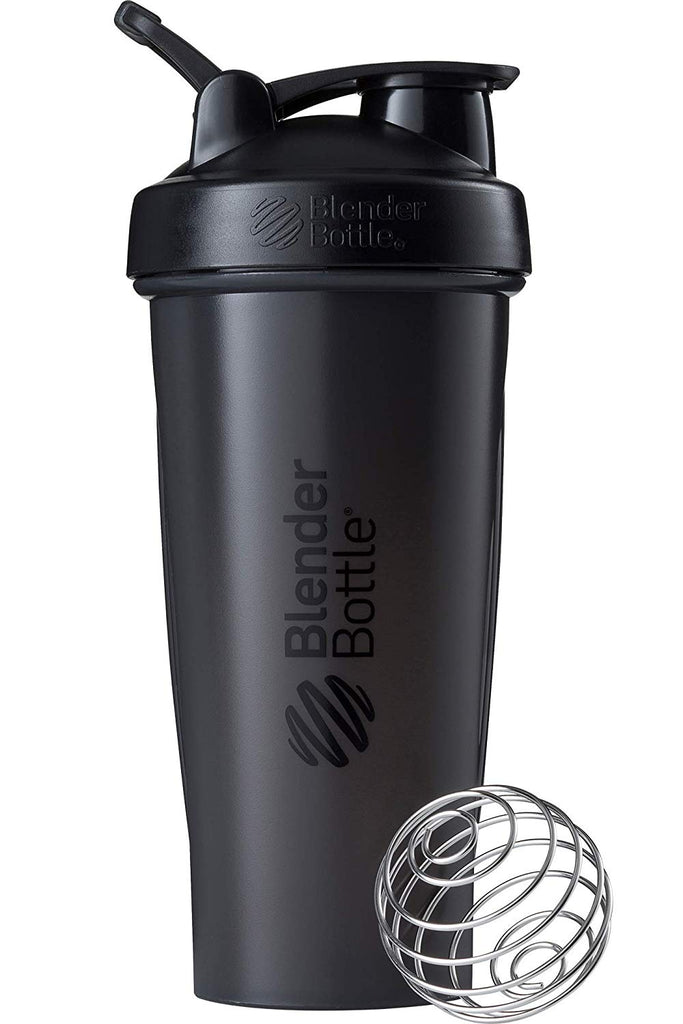

 USE HIGH-QUALITY MATCHA FOR A SMOOTH, RICH TASTE
USE HIGH-QUALITY MATCHA FOR A SMOOTH, RICH TASTE
